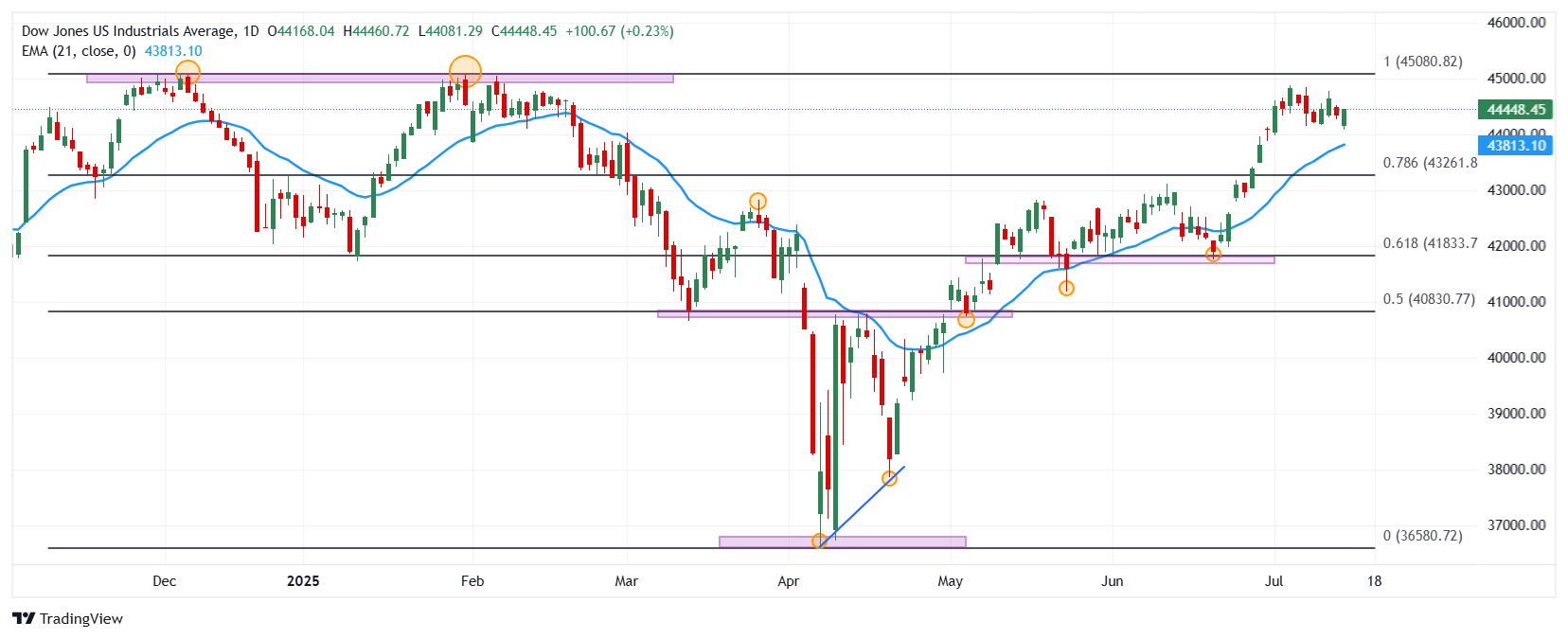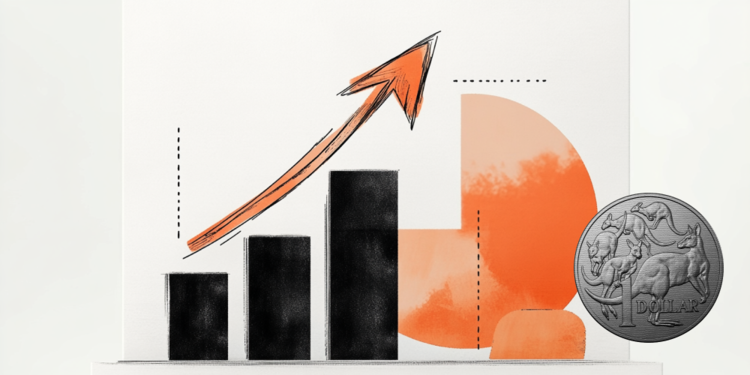- The Dow Jones rises 0.19% today, currently operating over 44,432.
- The Nasdaq 100 advances 0.46% daily, reaching maximums of July 10 in 22,887.
- The S&P 500 rebounds 0.21% in the day, in the midst of Donald Trump’s tariff threats to its commercial partners.
- Beth Hamack, president of Cleveland’s Fed, highlighted the uncertainty he has weighed on investment.
- The operators will be attentive tomorrow to the publication of the US consumption price index.
The Dow Jones reacted to the rise of minimum of July 1 in 44,081, finding buyers who took the index to a maximum of the day in 44,453.
The Dow Jones industrial average began operating at 44,168, while the Nasdaq 100 technological index began negotiations at 22,705. The S&P 500 opened in 6,228, taking up the short -term bullish perspective.
3M and Boeing Company lead the profits in the Dow Jones
The Dow Jones index wins 0.19% on the first day of the week, reaching a maximum of the day in 44,453.
Titles 3m (mmm) rebound 1.03% in the day, reaching maximum of July 10. On the other hand, Boeing Company (BA) actions advance 1.44%, reaching maximums not seen since January 8, 2024, signing its second consecutive day with profits.
In this context, Dow Jones rises 77 points, consolidating within the range of the previous session at 44,420.
The Nasdaq 100 operates updated by Applovin Corporation and Autodesk
The Nasdaq 100 technological index advances 0.36% daily, reaching maximums of July 10 at 22,887.
Applovin Corporation (app) values earn 7.15% in the day, reaching maximums of July 9, ending with two consecutive sessions down, leading profits in Nasdaq 100.
Autodesk titles (ADSK) rise 5.37% on the first day of the week, visiting July 10 at 298.37 $, concluding with five consecutive days with losses.
The Nasdaq 100 rebounds 80 points, currently quoting about 22,849.
The S&P 500 bounces from minimums of three days ignoring tariff threats
The president of the United States, Donald Trump, announced the tariff imposition of 30% to Mexico and the European Union, effective as of August 1.
On the other hand, Beth Hamack, president of the Cleveland Federal Reserve, said that the United States economy is healthy, although tariff uncertainty has been weighing on investment.
In the share market, the EQT Corporation (EQT) titles shoot 5.40% daily, reaching maximum of June 30 in 58.36 $, signing its second consecutive day with profits.
Investors will be attentive to the publication of the consumer price index (CPI) of the United States tomorrow. The consensus of analysts estimates that increases 2.7% year -on -year in June, above 2.4% observed the previous month.
The S&P 500 wins 10 points today, reaching maximums of July 10 in 6,270.
Technical Analysis of Dow Jones
The Dow Jones formed a short -term support given by the minimum of June 19 in 41,760. The following key support is observed in 40,747, a pivot point of May 6, in convergence with the 50% fibonacci setback. To the north, the important resistance is 45,068, maximum of January 31.
Dow Jones daily graphics

Dow Jones – Frequently Questions
The Dow Jones Industrial Avenge, one of the oldest stock market indexes in the world, consists of the 30 most negotiated values in the United States. The index is weighted by the price instead of capitalization. It is calculated by adding the prices of the values that compose it and dividing them by a factor, currently 0.152. The index was founded by Charles Dow, also founder of the Wall Street Journal. In recent years it has been criticized for not being sufficiently representative, since it only follows 30 companies, unlike broader rates such as S&P 500.
There are many factors that promote the Dow Jones Industrial Average (DJIA) index. The main one is the added performance of the companies that compose it, revealed in the quarterly reports of business benefits. The American and world macroeconomic data also contribute, since they influence investor confidence. The level of interest rates, set by the Federal Reserve (FED), also influences the DJia, since it affects the cost of credit, on which many companies depend largely. Therefore, inflation can be a determining factor, as well as other parameters that influence the decisions of the Federal Reserve.
Dow’s theory is a method to identify the main trend of the stock market developed by Charles Dow. A key step is to compare the direction of the Dow Jones Industrial Avenge (DJIA) and the Dow Jones Transportation Average (DJTA) and just follow the trends in which both move in the same direction. The volume is a confirmation criterion. The theory uses elements of maximum and minimum analysis. Dow’s theory raises three phases of the trend: accumulation, when intelligent money begins to buy or sell; Public participation, when the general public joins the trend; and distribution, when intelligent money abandons the trend.
There are several ways to operate with the DJ. One of them is to use ETF that allow investors to negotiate the DJ as a single value, instead of having to buy shares of the 30 companies that compose it. An outstanding example is the SPDR Dow Jones Industrial Avenge ETF (day). Future contracts on the DJ allow the specular operators about the future value of the index and the options provide the right, but not the obligation, to buy or sell the index at a predetermined price in the future. Investment funds allow investors to buy a part of a diversified portfolio of DJ values, which provides exposure to global index.
Source: Fx Street
I am Joshua Winder, a senior-level journalist and editor at World Stock Market. I specialize in covering news related to the stock market and economic trends. With more than 8 years of experience in this field, I have become an expert in financial reporting.







